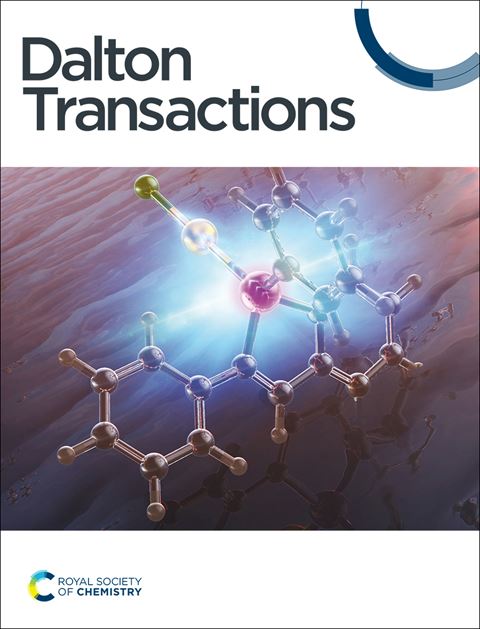Construction of BiOBr-Vo/MIL-101(Fe)-F microsphere heterostructure For Photocatalytic Nitrogen Fixation
IF 3.5
3区 化学
Q2 CHEMISTRY, INORGANIC & NUCLEAR
引用次数: 0
Abstract
Photocatalytic ammonia synthesis represents a highly promising and environmentally sustainable strategy for nitrogen fixation. In this study, a novel type II heterojunction MOF-based composite BiOBr-Vo/MIL-101(Fe)-F was successfully constructed. The introduction of oxygen vacancies on BiOBr via a thermal calcination strategy, and in situ doping with F-modified MIL-101(Fe) using solvothermal method, facilitated the adsorption and activation of nitrogen in the photocatalytic nitrogen fixation. The fluorine modification in MIL-101(Fe) can effectively promote the separation of charge carriers, thereby further enhancing the photocatalytic efficiency. Photocatalytic experiments reveal that the BiOBr-Vo/MIL-101(Fe)-F (10 wt% doping) composite achieves an optimal nitrogen fixation rate of 80.9 μmolNH3⋅gcat-1⋅h-1 under visible light (≥420 nm), which is 2.8 times higher than that of the hybridised materials without F modification and 21 times higher than that of pristine BiOBr. The type II heterojunction also effectively suppresses the recombination of photogenerated electron-hole (e--h+) pairs, resulting in an efficient separation of the charge carriers and an enhanced photocatalytic activity for the reduction of nitrogen. Continuous stable catalytic activity over 8 cycles (lifetime ≥ 32 h) show a negligible activity loss, which is attributed to the robust coordination structure of the BiOBr-Vo/MIL-101(Fe)-F. This finding carries significant implications for the development of novel nitrogen reduction photocatalysts that exhibit both high efficiency and stability.光催化固氮用bibr - vo /MIL-101(Fe)-F微球异质结构的构建
光催化合成氨是一种非常有前途和环境可持续的固氮策略。本研究成功构建了新型II型异质结mof基复合材料BiOBr-Vo/MIL-101(Fe)-F。通过热煅烧策略在BiOBr上引入氧空位,并采用溶剂热法原位掺杂f修饰的MIL-101(Fe),促进了光催化固氮过程中氮的吸附和活化。MIL-101(Fe)中的氟改性可以有效地促进载流子的分离,从而进一步提高光催化效率。光催化实验表明,掺入10 wt%的bibr - vo /MIL-101(Fe)-F复合材料在可见光(≥420 nm)下的最佳固氮率为80.9 μmolNH3⋅gcat-1⋅h-1,是未掺入F的杂化材料的2.8倍,是未掺入F的BiOBr的21倍。II型异质结还有效抑制了光生电子-空穴(e—h+)对的重组,从而有效分离了载流子,增强了氮还原的光催化活性。连续稳定的催化活性超过8个循环(寿命≥32 h)显示可以忽略不计的活性损失,这归因于BiOBr-Vo/MIL-101(Fe)-F的强大配位结构。这一发现对开发高效稳定的新型氮还原光催化剂具有重要意义。
本文章由计算机程序翻译,如有差异,请以英文原文为准。
求助全文
约1分钟内获得全文
求助全文
来源期刊

Dalton Transactions
化学-无机化学与核化学
CiteScore
6.60
自引率
7.50%
发文量
1832
审稿时长
1.5 months
期刊介绍:
Dalton Transactions is a journal for all areas of inorganic chemistry, which encompasses the organometallic, bioinorganic and materials chemistry of the elements, with applications including synthesis, catalysis, energy conversion/storage, electrical devices and medicine. Dalton Transactions welcomes high-quality, original submissions in all of these areas and more, where the advancement of knowledge in inorganic chemistry is significant.
 求助内容:
求助内容: 应助结果提醒方式:
应助结果提醒方式:


